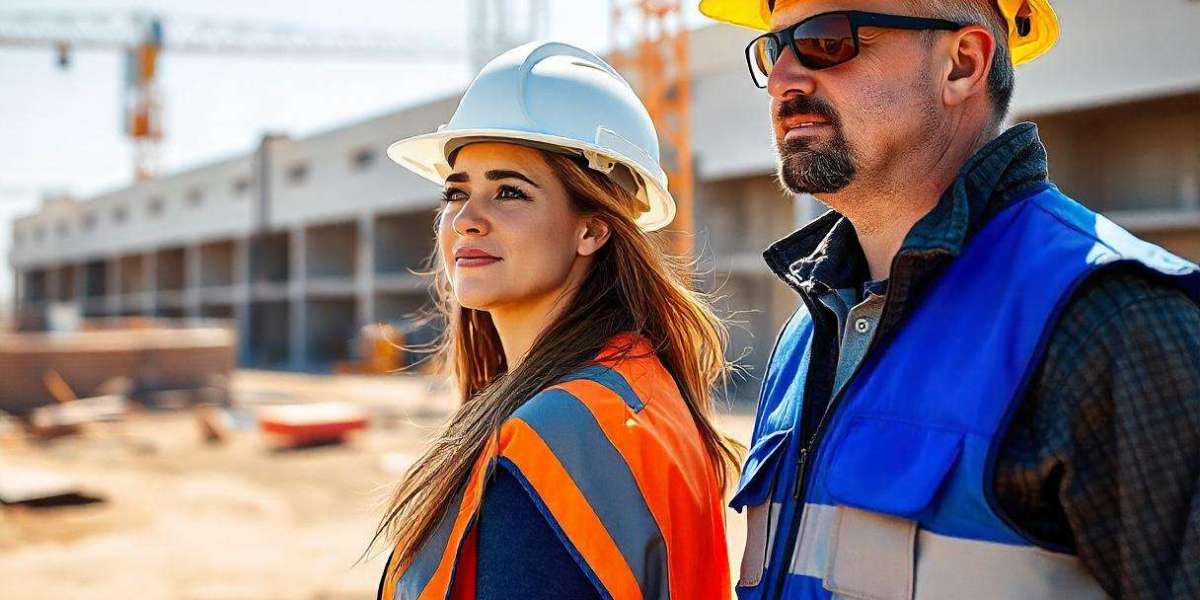Workplace safety is an ever-evolving field that continues to make strides globally. The importance of maintaining a safe working environment for employees has gained increasing attention over the years. With new technologies, stricter regulations, and better training programs, workplace safety is no longer an afterthought; it’s a priority. One such training program making a significant impact is the IOSH Managing Safely Course, which provides essential knowledge and skills for managing safety effectively in any organization. As safety standards continue to evolve, courses like the IOSH Managing Safely Course play a crucial role in empowering professionals to implement effective safety measures. With these advancements, the future of occupational safety looks promising, and we are moving towards a safer, more regulated work environment.
The Early Days: Safety was Optional
Not long ago, workplace safety was often viewed as an optional luxury rather than a necessity. In the early days of industrialization, workers were exposed to extreme risks without much in the way of protections. From coal miners inhaling toxic dust to factory workers operating dangerous machinery without protective gear, the lack of concern for safety was staggering. The situation worsened until a series of major industrial accidents in the late 19th and early 20th centuries forced societies to recognize the dire need for safety measures.
One of the most notable examples of this shift is the introduction of the Occupational Safety and Health Act (OSHA) in 1970 in the United States. The act established a framework for regulating workplace safety standards and has influenced similar laws across the globe. This movement toward regulation sparked a wave of safety innovations, including the use of personal protective equipment (PPE), safety signage, and hazard communication protocols.
The Rise of Safety Training and Certifications
As safety regulations tightened, the need for a well-trained workforce became more apparent. Over time, businesses began recognizing that safety training not only ensured compliance with laws but also improved productivity by reducing workplace accidents.
One course that has become a standard for safety professionals worldwide is the NEBOSH (National Examination Board in Occupational Safety and Health) certification. This internationally recognized qualification empowers professionals with the knowledge to manage workplace health and safety effectively. Many industries across the globe require safety officers to hold such certifications, ensuring they are equipped with the necessary skills to prevent accidents and respond to emergencies.
The Role of Safety Officer Courses
In many countries, including Pakistan, the demand for safety professionals has surged, especially in industries like construction, manufacturing, and oil and gas. This has led to a rise in Safety Officer Courses designed to provide workers with the tools they need to identify hazards, enforce safety protocols, and mitigate risks.
For example, in Pakistan, safety officer training programs focus on educating workers on the importance of workplace hazard identification and risk assessment. These courses aim to create a safety-conscious culture within organizations. Graduates are often better equipped to assess potential hazards, implement preventive measures, and respond to workplace emergencies. Investing in a Safety Officer Course in Pakistan can ensure that employees understand the critical aspects of workplace safety.
Read More: Explore Safety Officer Courses in Pakistan Here
Technological Advancements and Their Impact on Safety
As technology continues to advance, so do the tools available to enhance workplace safety. The rise of automation, for example, has led to a decrease in human error-related accidents, particularly in high-risk environments such as factories and warehouses. However, the integration of these technologies presents its own set of challenges.
Smart sensors and wearable safety devices have made it possible for workers to be monitored in real-time, helping employers detect signs of fatigue or exposure to hazardous conditions. These devices can send instant alerts if a worker is at risk, allowing for rapid intervention before an accident occurs.
For instance, in the construction industry, smart helmets equipped with sensors can monitor the wearer's vitals and environment. If a worker is in an area with high levels of toxic fumes or if their heart rate exceeds safe levels, the system will immediately notify supervisors.
On the flip side, the rapid introduction of new technologies has led to concerns about cybersecurity. As workplaces become more connected, ensuring the security of sensitive safety data is a growing priority.
The Importance of Ongoing Training and Development
Despite the numerous advancements in safety protocols and technology, it is clear that safety training must continue to evolve. One of the most significant trends in the future of occupational safety is the emphasis on continuous learning.
Employees no longer attend a single safety training session and leave it at that. Instead, businesses are embracing an ongoing approach to safety training, where employees are continuously updated on new safety protocols, technologies, and regulatory changes.
For instance, courses such as the IOSH Managing Safely Course focus on providing managers with the skills to assess risks and implement safety systems. This type of training is essential for ensuring that everyone, from entry-level workers to top management, is aligned in their commitment to safety. The course provides insight into accident investigation, risk assessment, and creating a safety culture within the organization.
With organizations prioritizing safety as a long-term commitment, it’s no longer enough to simply take a course once. Continuous training ensures that workers are always prepared for evolving risks and challenges in their specific industries.
Read More: Learn More About the IOSH Managing Safely Course in Multan Here
Looking Ahead: What’s Next for Global Occupational Safety?
As we look ahead to the future of workplace safety, several trends are likely to shape the direction of the industry:
1. Increased Focus on Mental Health
While physical safety is always top of mind, the importance of mental health in the workplace is gaining recognition. Many organizations are implementing mental health awareness programs, recognizing that a healthy workforce is a safer workforce.
Employees who are mentally exhausted or stressed are more prone to making errors or neglecting safety procedures. By prioritizing mental health alongside physical safety, companies can create a more holistic approach to wellbeing.
2. AI and Automation
Artificial intelligence (AI) and machine learning will continue to revolutionize the workplace safety landscape. Through predictive analytics, AI can help predict when and where accidents are most likely to occur. This allows organizations to proactively address risks before they turn into accidents.
Additionally, automation can take over dangerous tasks, reducing human exposure to high-risk environments. For example, autonomous vehicles are now being used to transport materials in mining operations, significantly reducing the risk to human workers.
3. Sustainability and Environmental Safety
As environmental concerns grow, there will likely be an increased emphasis on sustainability in safety practices. This includes reducing hazardous waste, implementing green technologies, and ensuring that workplaces adhere to environmental safety standards.
Conclusion
The evolution of global occupational safety has come a long way, and there’s no turning back. As technology continues to shape the way we work, the future of safety is both promising and challenging. By investing in safety courses like the IOSH Managing Safely Course, understanding the importance of Safety Officer Courses, and embracing continuous learning, we can ensure that the workplace of the future is as safe as possible.
Whether you’re in Pakistan, the UK, or anywhere else in the world, taking steps to improve workplace safety is a wise investment that benefits everyone. It reduces accidents, increases productivity, and creates a healthier work environment. As the world continues to change, staying ahead of safety trends will help you create a safer, more secure workplace for your employees.
Read More: Discover More About the IOSH Course in Multan Here
This article outlines the evolution of global occupational safety and discusses what the future holds. Through a step-by-step guide, we’ve highlighted how advancements in technology, training, and regulations have paved the way for safer workplaces. If you’re considering enhancing your own workplace safety skills, enrolling in a Safety Officer Course in Pakistan or an IOSH Managing Safely Course could be the perfect next step.



